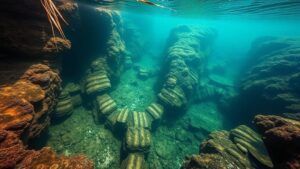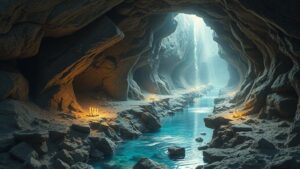Investigating the lost city of Agartha, rumored to lie deep within the Earth’s crust.
Investigating the Lost City of Agartha
Agartha, a mythical city said to reside deep within the Earths crust, has captivated the imaginations of explorers, scientists, and writers alike. The legend proposes a hidden utopia, rich in advanced technology and wisdom. This article delves into the origins, interpretations, and implications of Agartha, exploring both historical context and modern interest in this enigmatic concept.
Origins of the Agartha Legend
The belief in Agartha can be traced back to various ancient cultures and texts. Notably, the concept echoes through Hindu and Buddhist traditions, which speak of underground realms and cities. The term Agartha itself is linked to the Sanskrit word Agartha, meaning unreachable or inaccessible, which reflects the idea of a hidden domain.
In the early 20th century, the notion of Agartha gained traction through the writings of various esoteric thinkers. One of the most influential was the French author, Louis Jacolliot, who published works in the 1860s that suggested connections between Buddhism and advanced civilizations located underground. e writings often included claims of interactions with these hidden societies.
Geographical Claims and Explorations
Several explorers and researchers have alleged that Agartha lies beneath different regions, often citing places like the Himalayas, the North Pole, and even the vast deserts of Australia. Notable expeditions include those by the American explorer William Morgan in the 19th century, who claimed to have navigated a subterranean world, though no concrete evidence substantiated these assertions.
- The North Pole has been linked with Agartha due to its remote and uncharted nature.
- The Himalayas are often tied to spiritual and mystical journeys, with many legends describing underground sanctuaries.
Scientific Perspectives
From a scientific standpoint, the existence of a substantial, habitable city beneath the Earths crust poses significant challenges. Earths crust averages about 35 kilometers thick beneath continents, and reaching such depths would require overcoming extreme heat, pressure, and geological instability. temperatures at these depths can exceed 300 degrees Celsius, rendering it inhospitable for human life as we know it.
Geologists use seismic imaging and other techniques to study the Earths crust but have yet to find any definitive evidence of a hidden city. Instead, these studies have revealed fascinating details about the composition and behavior of the Earths layers.
The Cultural Impact of Agartha
The legend of Agartha has significantly influenced literature, art, and popular culture. For example, fantasy novels and films often depict underground civilizations, showing how widespread the theme of hidden worlds has become. Examples include Jules Vernes Journey to the Center of the Earth, and more recently, movies like The Core, which explores themes of subterranean worlds.
- Jules Vernes novel sparked interest in Earths deeper layers and imaginative possibilities.
- Modern films perpetuate the idea of undiscovered realms lying beneath the surface.
Myths vs. Reality: Understanding the Appeal
The allure of Agartha and similar legends may stem from humanitys innate desire to explore the unknown and seek out hidden knowledge. This fascination is comparable to the way ancient sailors were drawn to the sea, compelled by tales of undiscovered lands and treasures.
Also, in an age characterized by rapid technological advancement and global challenges, the idea of a utopian society like Agartha provides a metaphorical escape from contemporary issues. It represents a hope for solutions and enlightenment, attracting those who wish to delve into the mystical or unexplained.
Actionable Takeaways
For those intrigued by the concept of Agartha and other underground legends, consider the following:
- Explore ancient texts and myths to gain a deeper understanding of cultural interpretations of hidden civilizations.
- Engage with scientific literature on geology to appreciate the actual structure of the Earth and the challenges it presents to the notion of habitable underground cities.
- Reflect on how such myths reflect our desires and aspirations for exploration, knowledge, and community.
To wrap up, the legend of Agartha continues to intrigue and inspire exploration of both the physical world and the human psyche. Though its existence remains unfounded in physical evidence, Agartha serves as a fascinating lens through which to examine our collective imagination and enduring fascination with the unknown.


